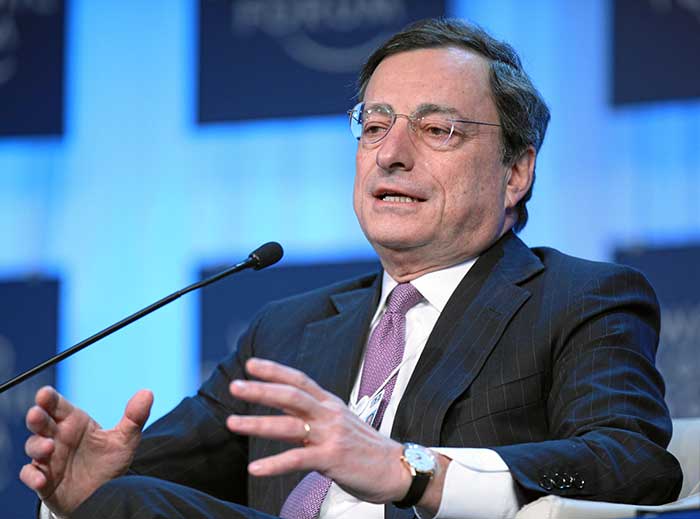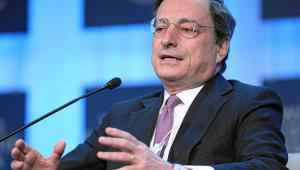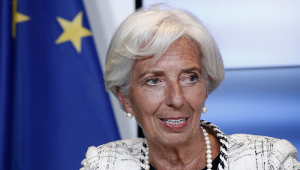web_mario_draghi_-_world_economic_forum_annual_meeting_2012.jpg

Mario Draghi, president of the European Central Bank
Redoubling its efforts to jump start Europe’s sluggish economy, the bank announced yesterday it would slash interest rates, cut its bank deposit rate and expand its quantative easing programme.
Mario Draghi, president of the ECB, told a press conference yesterday that this “comprehensive package will exploit the synergies between the different instruments”.
It will work to further ease financing conditions, stimulate new credit provision and in turn reinforce the momentum of the region’s economic recovery and accelerate the return of inflation levels to closer to the target of 2%, he said.
The package will see interest rates fall from 0.05% to 0% and the bank deposit rate will slide further into negative territory, from -0.3% to -0.4%, while the bank’s money printing programme will expand from €60bn to €80bn.
Under the programme, the bank pumps money into the eurozone by buying bonds from financial institutions that then reinvest the proceeds elsewhere in Europe’s economy. As part of measures announced today, the programme will now buy bonds issued by companies as well.
Draghi intends the quantative easing programme to continue until March 2017, or beyond if necessary, until there is a sustained adjustment in the path of inflation consistent with its aim of achieving inflation rates close to 2%.
He said that the bank cut interest rates to reflect the decline in oil prices. It is hoped cutting the bank deposit rate will discourage banks from holding on to their deposits and channel money into the financial system, lending money cheaply to households and businesses.
The bank projects inflation to be 0.1% this year and to rise to 1.3% in 2017 and 1.6% the following year, and Draghi stressed the eurozone is not yet in deflation thanks to Thursday’s measures.
It did cut growth forecasts however. It estimates the bloc’s economy to expand by 1.4% this year, down from an earlier forecast of 1.7%, and by 1.7% in 2017, rather than 1.9%. It estimates 1.8% growth in 2018.
In a context of financial market volatility, slowing growth, low global demand and tumbling commodity prices, stimulation measures announced by the bank three months ago have had little effect.
Observers are increasingly sceptical of the reliance on monetary policy to bolster growth, as efforts around the world appear futile. The OECD and the International Monetary Fund have called for a more balanced approach, that incorporates investment as well as monetary policy.
The shock of this barrage of measures caused turbulence yesterday as European stock markets tumbled. After an initial fall against the dollar, the euro leapt up again, marking one of the biggest one-day swings in the currency’s history.













